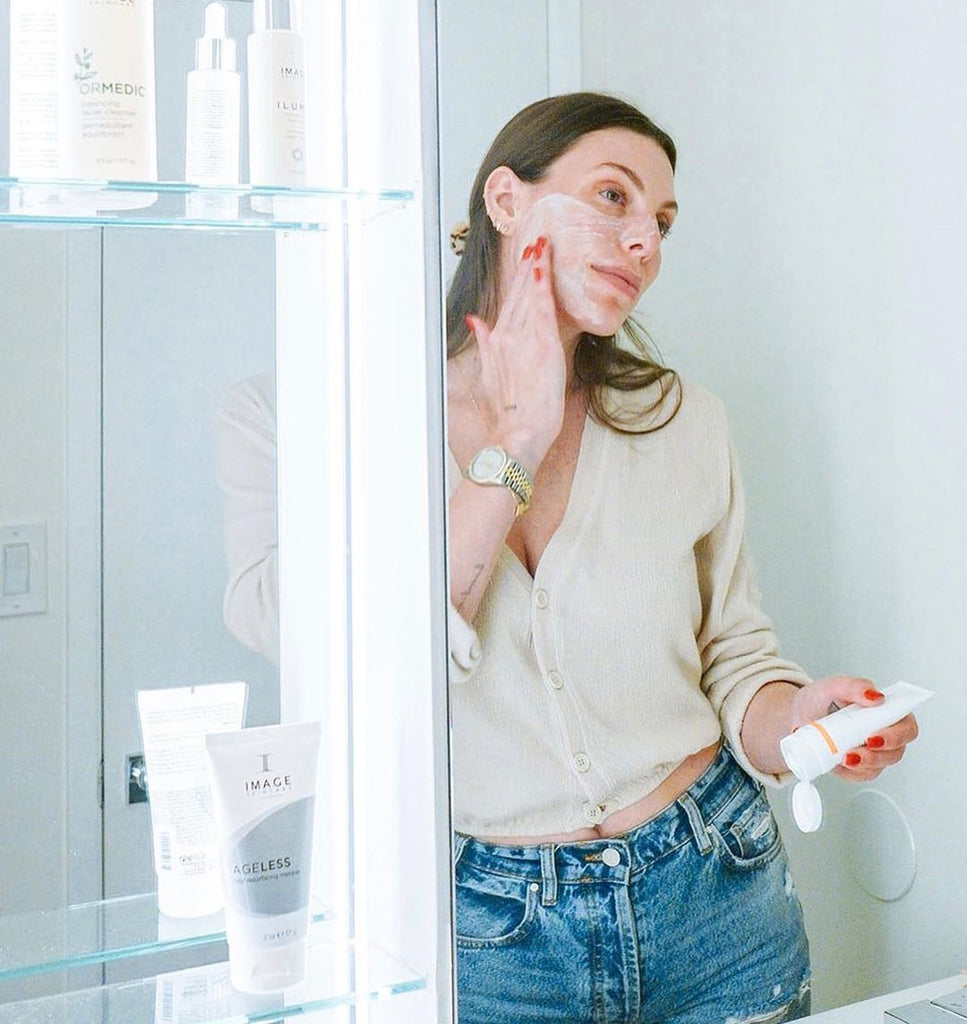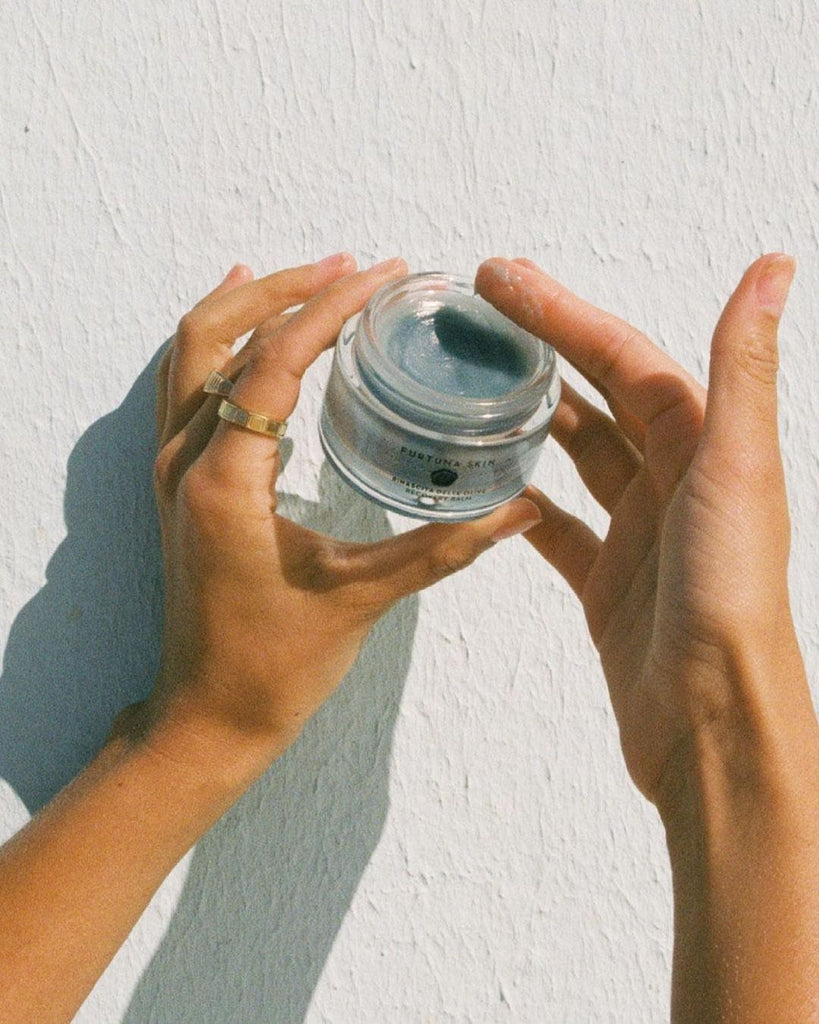If your skin has felt dryer than usual, you’re not alone: Skin is universally prone to dryness and irritation in the wintertime, meaning it’s officially time to layer your clothing and cosmetics. “As temperatures drop, the skin often becomes dry as there is less humidity and moisture in the air,” Dr. Marisa Garshick, M.D., board-certified dermatologist, tells Bustle. “The increased use of indoor heating can also be drying on the skin, [while] other factors such as hot showers can also disrupt the skin barrier, leaving the skin susceptible to moisture loss and worsening dryness, irritation, and sensitivity.”
Celebrity facialist Candace Marino concurs, adding that the cold weather conditions can simultaneously worsen — or cause flare-ups in — those with conditions like rosacea, eczema, and psoriasis. This is why experts recommend “winterizing” your beauty regimen, aka crafting a winter skin care routine that keeps your complexion moisturized and protected this time of year. And this applies to all skin types, even if you’re naturally on the oilier side.
If you’re unsure where to start, you’re in luck: Bustle spoke with the beauty pros for tips on how to tweak your skin care routine for the wintertime.
1. Take Warm — Not Hot — Showers
While long, hot showers are especially tempting in the winter, experts advise against the indulgence this time of year. “Hot showers and prolonged exposure to water can be drying on the skin and should be avoided in the wintertime,” Garshick tells Bustle. Instead, she suggests short, lukewarm showers — once per day at most — and gently patting dry when finished. Not sure how hot is too hot? Dr. Mark McKenna, M.D., chief medical officer and founder of OVME Aesthetics has a simple rule of thumb: “Water that’s hot enough to make the skin flush pink is usually too hot,” he says.
Besides sucking moisture out of your skin, hot showers mess with your natural sebum. “Hot showers dehydrate the skin by removing healthy skin oils from the surface of your skin,” says Dr. Courtney Rubin, M.D., board-certified dermatologist and co-founder and CMO at Fig.1. For oily skin types, that can lead to increased oil production to make up for what was lost... which could lead to breakouts.
2. Use Gentle Soaps & Cleansers
Rubin recommends using soap that is fragrance-free and gentle, both in the shower and on your face. “Apply it with your hands — not a loofah or scrubbing brush, which will mechanically abrade and break down the skin barrier,” she tells Bustle.
3. Layer Your Serums
Think of your winter skin care routine like your winter wardrobe. “Like with the clothes we wear, in the winter we need to layer our products more and use serums,” Aida Bicaj, esthetician and celebrity facialist, tells Bustle. “If you use one serum in the summer, you need two to three in the winter under a thicker cream.”
But proper winter skin care isn’t as simple as layering any bundle of products: The actual ingredients matter, too. McKenna suggests incorporating a hyaluronic acid serum into your regimen and applying it before a moisturizer. You can layer an HA serum with a gentle antioxidant serum for added protection, he says.
4. Opt For A Thick Face Cream
For your moisturizer, Rubin and Bicaj recommend using a thicker face cream in the colder months. Look for one that contains hydrating and barrier-protecting ingredients such as ceramides, glycerin, hyaluronic acid, and squalane. Garshick points to niacinamide and colloidal oatmeal as other soothing salves.
Another pro tip: If you have sensitive skin, Garshick says to opt for fragrance-free serums and creams — especially this time of year. “When the skin is dry and the skin barrier is disrupted, it can be more susceptible to allergy and irritation from fragrances,” she explains.
5. Use SPF
When it comes to protecting your skin, don’t forget SPF — regardless of whether or not it seems sunny. “Wear SPF every single day,” Marino tells Bustle. “This is super important, and people often skip it in the winter months when we see less sun, however, you can still get sun damage and sunburns during the winter, and this will only increase dryness and sensitivity in the skin.”
6. Exfoliate — But With Caution
As you add hydrating ingredients, dermatologists suggest decreasing the use of anything drying or irritating, like chemical and physical exfoliants. “Abrasive scrubs should be avoided as these can cause micro-tears in the skin and disrupt the skin barrier. This can contribute to increased skin sensitivity and may lead to redness and irritation,” Garshick advises, while Rubin suggests switching out exfoliating soaps and cleansers for gentler options, such as oil-based cleansers.
That said, exfoliating isn’t off the table for the season — and can, ironically, help your skin absorb more moisture in the long run. “Adding more hydration to dead skin cells will only thicken the stratum corneum, and create a more dense layer of them,” Marino explains. Thus, in order for products to properly penetrate, that top layer of dead skin buildup must be broken down via exfoliation beforehand.
For the job, Marino recommends enzyme-based exfoliants, which she notes are gentle and will be less likely to sensitize the skin.



